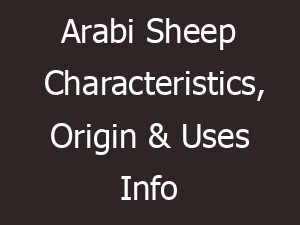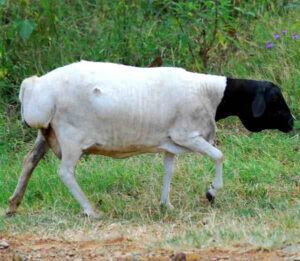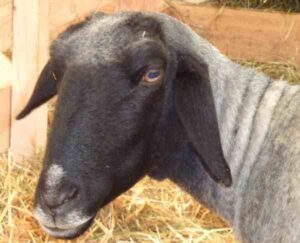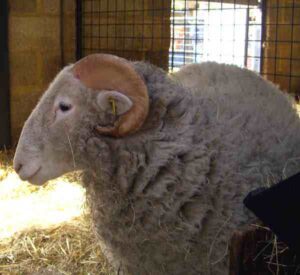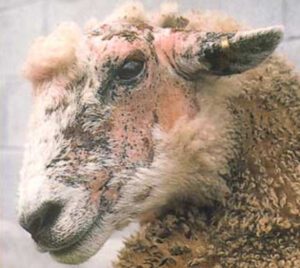The Welsh Mountain sheep is a small breed of domestic sheep. As the name suggests, it is from Wales. And it is actually from the higher parts of the Welsh Mountains.
There are a number of varieties of this breed in Wales which are bred for sheep farming. These varieties are mainly color variations, but some are being developed as separate sheep breeds.
The breed is well adapted to the harsh environment in which it lives. Many different varieties of this breed are known for their locality of origin or their appearance.
The standard Welsh Mountain sheep is completely white in coloration. The white variety is the most common variety in the mountains of Wales and has been exported to other parts of the world.
The Badger Face Welsh Mountain sheep comes in two varieties; the Torddu and the Torwen.
The Balwen Welsh Mountain is black with white blaze on the face, white socks on legs, below hocks and a part-white tail.
And the Black Welsh Mountain sheep is entirely black in color. The South Wales Mountain is similar to other Welsh Mountains, but is rather larger in size. However, read some more information about this domestic sheep breed below.
Welsh Mountain Sheep Characteristics
Welsh Mountain sheep is a small sized animal which is usually white in color with a white face. It has no wool on forehead or cheek and has white legs with no wool below the joint.
Rams usually have horns, while the ewes are naturally polled. The rams have curved horns, although some are polled. Tail of these animals is not normally docked, and their fleece is thick and moderately long.
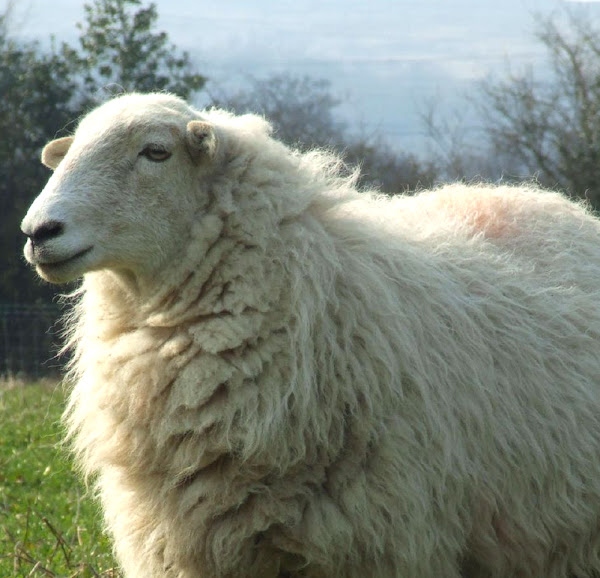
Average live body weight of these animals can vary depending on the variety. But most often they are smaller sized animals. Photo and info from Wikipedia.
Uses
This is a dual purpose breed. It was raised mainly for wool and milk in the Middle Ages. But they become well known for their tasty meat by the 19th century. Today they are raised mainly for meat.
Special Notes
The Welsh Mountain sheep are very hardy animals. They are well adapted to the harsh environment of their native area.
They are small and sure-footed, and are able to pick their way over rock and scree for finding shelter in stormy weather.
They can dig through snow, climb walls and push through small gaps. They are kept on the hills or open mountain in their native area all year round.
The breed was previously used for milk and wool production. But today, the breed is raised mainly for meat production.
Although the breed is very good for wool production. Meat of the Welsh Mountain sheep is of very good quality. And the carcass of the purebred lamb is usually within the range of 11 to 16 kg. However, review full breed profile of this breed in the chart below.
| Breed Name | Welsh Mountain |
| Other Name | None |
| Breed Purpose | Meat, wool |
| Special Notes | Very strong and hardy, well adapted to the native harsh environment, previously used for milk and wool but now used for meat, excellent meat quality, good for wool production |
| Breed Size | Small to medium |
| Horns | Rams have horns, but the ewes are polled |
| Climate Tolerance | Native climates |
| Color | White |
| Rarity | Common |
| Country/Place of Origin | Wales |

